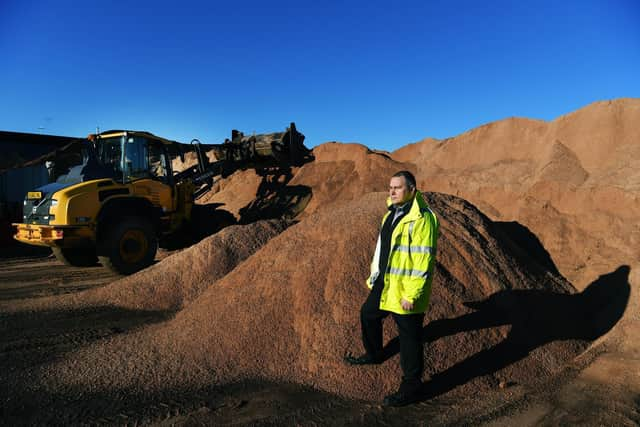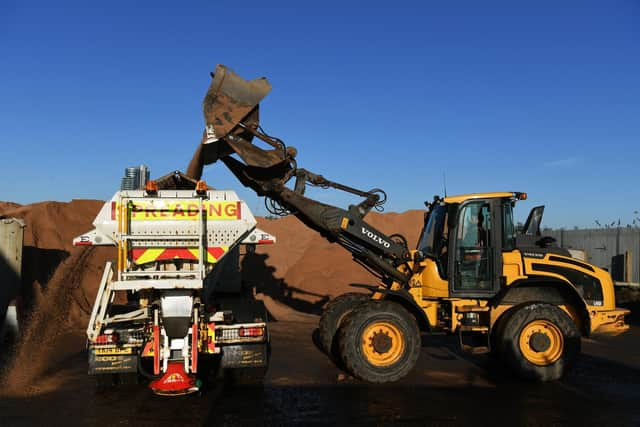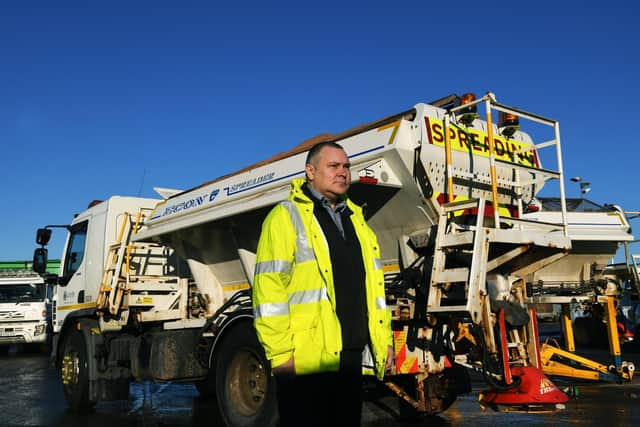Meet the team behind Leeds Council's snow and ice gritters covering more than 800 miles every year in freezing temperatures
and live on Freeview channel 276
The Yorkshire Evening Post went behind the scenes with the council’s highways team, as they prepared for a “precautionary grit”, to see just how they keep the country’s third largest city on the right track - and dispel some myths.
A "precautionary grit" will see 30 gritter trucks cover 800 miles of the city’s road network in three hour shifts. On average they will do 30 miles each per stint and are laden with eight tonnes of grit each.
Advertisement
Hide AdAdvertisement
Hide AdChris Clarke, the council’s highways maintenance manager, said: “Every-time we go on a precautionary grit, that takes place in advance of any weather event based on the forecast, we have got 30 trucks out. For a normal winter there are 90 staff involved, if we start getting into snow and ploughs we can be up to 120 staff. I don’t think people realise how big an operation it is.


“We concentrate on roads that link areas together, blue light routes, A roads, and main distributor roads through estates. Cul-de-sacs and side streets we can’t do, or, where we can’t get gritters on. We have to be realistic about what we can do.”
With the nature of winters changing - each year is different and presents different challenges, he added.
He explained that salt doesn’t work unless there is traffic going over to crush it to create the brine. When it snows heavily at night, even though a road is gritted, the snow will often still settle due to less traffic activating the grit salt which often leads to difficulties for morning commutes, and complaints.
Advertisement
Hide AdAdvertisement
Hide Ad

Mr Clarke explained: “People wake up and see everything white over. We get complaints saying “why wait until the last minute”, “you knew this was coming”.
“Our planning for winter starts in April. It is never off the council radar. We are six months planning and six months doing it - it is winter all year round for us.”
Each year the council has 24,000 tonnes in stock and on average uses 13,500 of them. However, last year due to a “long and cold winter”, it needed to draft in extra (supplied by a mine in Cheshire or Cleveland Potash at Boulby Mine just north of Staithes) as they used 26,000 tonnes
So, how does the council decide when and where to grit?


Leeds City Council uses a forecast that is specific to the city and uses data from two weather stations, sited at the coldest locations possible - one near Leeds Bradford airport and one on the A64 near Whinmoor. Every five minutes, non-stop from October to April, the weather stations distribute information which is collected by one company and received by another which then collates data and determines a forecast
Advertisement
Hide AdAdvertisement
Hide Ad“We have a contract with a weather forecaster where they send us information from the start of October to the end of April”, explains Mr Clarke.
“We have people monitoring every day throughout that period and through the night if necessary. Rotas are set up from the beginning of October so drivers know when they are on from that six month period and when they are on stand-by - but we make the decisions on the day.”
The council’s highways teams check the forecasts three times a day - at 5am, 11am and 5 or 6pm but generally makes a decision on gritting requirements using the 11am reading, as between then and tea-time, the weather is less changeable.


Drivers and dangers
Despite the dangers of ending up in a ditch (it has happened from time to time says Mr Clarke who has been in the job for 39 years), gritter drivers are proud to do the job they do. They do it outside of their contracted hours as volunteers, and on top of their day job as road workers for the council.
